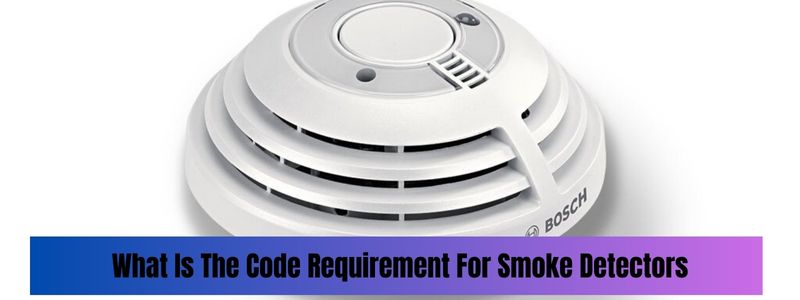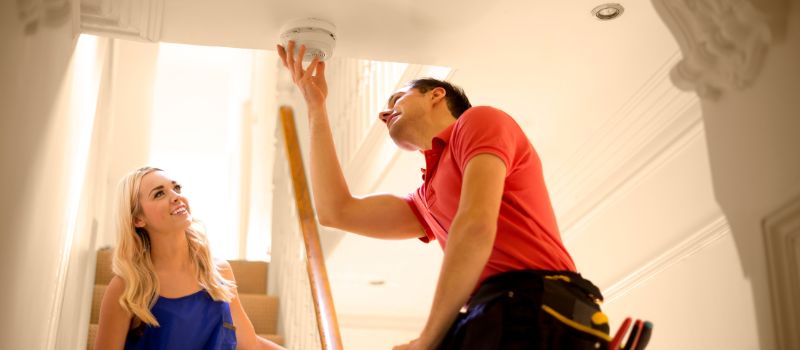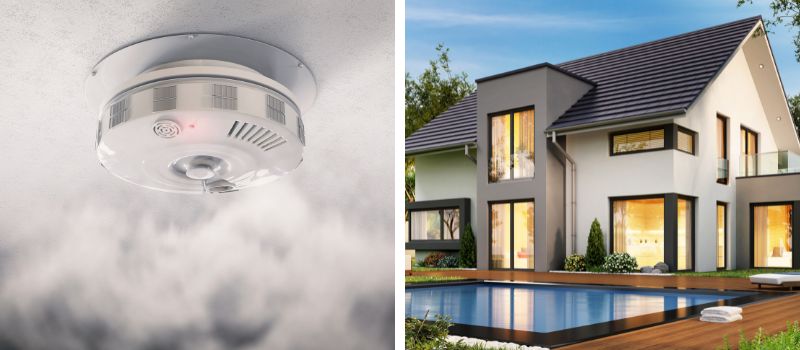Carbon monoxide detectors should be put in every 10,000 square feet, or every 100 feet. CO alarm signals need to be different from other signals (they can’t use your fire alarm horns or bells), and buttons or keypads should tell you where the CO alarm is.
What is the coverage area of a CO detector?
Carbon monoxide (CO) is a silent and potentially deadly gas that cannot be detected by human senses. CO detectors play a crucial role in safeguarding lives by providing early warning of dangerous CO levels.
To ensure effective detection, it is important to understand the coverage area requirements for CO detectors.
In this article, we will explore expert insights on the coverage area of CO detectors, focusing on their optimal placement and adherence to guidelines for enhanced safety.
Understanding CO Detector Coverage Area:
CO detectors are designed to monitor and detect the presence of carbon monoxide in the surrounding environment. The coverage area of a CO detector refers to the space within which it can effectively sense and alert occupants of potentially hazardous CO levels. Adhering to recommended coverage area guidelines is essential to ensure reliable detection and timely response.
Factors Influencing CO Detector Coverage Area:
Several factors influence the determination of the coverage area for CO detectors. These factors include:
- Room Size: The size of the room or area being monitored is a critical consideration. Larger rooms may require multiple CO detectors to ensure comprehensive coverage
- Placement Height: CO detectors are typically placed at a recommended height on the wall, near the ceiling, or on a stand. Placement height is important as CO is slightly lighter than air and tends to rise. Proper positioning ensures effective detection at the appropriate level.
- Proximity to Potential Sources: CO detectors should be strategically placed in proximity to potential sources of carbon monoxide, such as gas appliances, fireplaces, furnaces, or garages. Placing detectors near these sources enhances early detection and provides timely warnings.
Recommended Coverage Area for CO Detectors:
To ensure effective CO detection, it is crucial to follow expert recommendations for coverage area. While specific requirements may vary based on local regulations and guidelines, the following general guidelines are widely accepted:
- Residential Areas: In residential homes, it is recommended to install at least one CO detector on each level of the house, including the basement. Detectors should be placed in or near sleeping areas to provide early warning while occupants are most vulnerable.
- Commercial Buildings: Commercial buildings should comply with local building codes and regulations. Guidelines may vary depending on factors such as building size, occupancy type, and potential CO sources. Consulting with fire safety professionals is advisable to determine the appropriate number and placement of CO detectors.
- Multi-Family Dwellings: In multi-family dwellings such as apartments or condominiums, it is essential to install CO detectors in common areas such as hallways and shared spaces. Additionally, individual units should be equipped with detectors near sleeping areas and potential CO sources.
Consulting Fire Safety Professionals:
Determining the optimal placement and coverage area for CO detectors can be a complex task. It is highly recommended to consult fire safety professionals who possess expertise in adherence to local regulations and industry best practices. These professionals can assess the unique characteristics of your space and provide personalized recommendations for maximum safety and protection.
Conclusion:
CO detectors are vital devices for early detection of carbon monoxide, a silent but potentially deadly gas. Understanding the coverage area requirements for CO detectors ensures reliable and effective detection throughout your living or working space.
By considering factors such as room size, placement height, and proximity to potential CO sources, and consulting fire safety professionals, you can create a secure environment that prioritizes the safety and well-being of occupants.
Invest in the proper placement of CO detectors and experience peace of mind knowing that you have taken essential steps to protect yourself and those around you.
Read more:
- How Many Smoke Detectors In A 1500 Sq Ft House?
- Do Smoke Detectors Go Off For Carbon Monoxide?
- What Does Carbon Monoxide Alarm Sound Like?

Edward’s expertise in smoke detectors is particularly noteworthy. He has conducted extensive research on the latest advancements in smoke detector technology and has worked closely with manufacturers to develop cutting-edge products that can detect fires more accurately and quickly.




